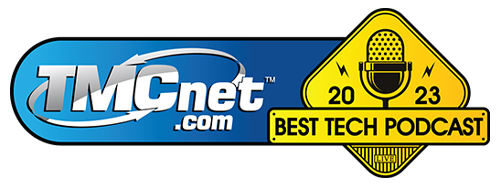EP 52: AI's Role in Retail and Sustainable Supply Chains
Posted on April 10, 2024 by Fusion Connect
In this eye-opening episode of Tech UNMUTED, George and Santi explore the transformative power of AI in retail supply chains, highlighting its potential to not only optimize operations but also to foster sustainability and ethical manufacturing. By integrating AI and blockchain technologies, they discuss how real-time collaboration and trend analysis can lead to more responsive and responsible production practices. From reducing waste in the fashion industry to enhancing visibility and accountability in manufacturing, this discussion sheds light on AI's capability to revolutionize supply chains across various sectors. Tune in to discover how AI is setting new standards for efficiency, sustainability, and innovation in retail and beyond.
Watch & Listen
Tech UNMUTED is on YouTube
Catch up with new episodes or hear from our archive. Explore and subscribe!
Transcript for this Episode:
INTRODUCTION VOICEOVER: Dive into the world of innovation with us as we unravel the challenges, breakthroughs, and latest trends that are shaping our digital landscape. This is Tech UNMUTED, your guide to the tech revolution.
GEORGE: Welcome to the latest episode of Tech UNMUTED. Today, we're going to take a look at AI in retail supply chains and how you can potentially optimize things across the supply chain and change the customer experience. This really applies to almost any supply chain. It could be manufacturing of heavy goods that have an end user, but we're going to use an example here that's retail. If you think about the way most supply chains work today, there's a design element in the front end.
It could be modifying products that are being already sold in the market. It could be creating new products to go to market with, or some variation between the two of those. There's typically some inputs from the market, trend analysis, those kinds of things. Very infrequently is it real-time input. In most cases, there's not a ton of collaboration with the supplier base, in particular, in the design element of it. If you look back, and this is years ago, the 787 Dreamliner that Boeing had launched, their approach on that was to integrate their supplier base from the beginning, have them be part of the design, have them collaborate on the things that were in the supply chain and when they would deliver.
SANTI: Which makes sense, right?
GEORGE: It does.
SANTI: It sounds like a really good idea when you think about it. Don't assume, right? Let's get the feedback from people who are actually making the stuff and try to make them part of the process. I think it's a brilliant idea.
GEORGE: Everything in that case was-- it was being driven from a couple of perspectives. How do we innovate more quickly, but also that thing that we're integrating in or that new feature that we're adding, how viable is it, how much does it cost, how would I get it delivered in time to be put on the airplane? In their case, there were a tremendous number of delays in that 787 production. They missed the first year's delivery by, I think, nine months.
They delivered actually in the following year, but I think it was about a nine-month delay to that first delivery. If you think about where we're at today, we have AI, we have blockchain, which didn't exist back in that timeframe. AI can help with that collaboration. If you think of a retail supply chain, think of it from a fashion standpoint. You have things going on TikTok, you have things going on in a store, you have sales data, you have a bunch of things you could triangulate on.
If all of that were fed back to a collaborative environment with the base supplier, the brand, and their suppliers, people who make elements of the clothing, and done in a way that it gave you real-time visibility so that you could potentially adjust it as you are creating new fashion to meet the market demands. Think about the broader piece here of how do you then also think about sustainability, ethical manufacturing, all of these things that are issues? Try to avoid fast fashion, where clothing is produced and discarded.
What if you add that entire supply chain I just described? It's more collaborative, it's more real-time, but also with an eye towards sustainability, ethical manufacturing, and even think about sustainability from the production inputs, the materials that are used, where they're sourced from, all the way through how that piece of clothing is disposed of. Is it recycled? Is it purely fast fashion, and it wears out in four wears and gets thrown away?
Having the visibility then to modify the supply chain on the back end to avoid those things starts to solve for a bunch of issues that we have today. You can do that, again, AI can help in the coordination and the visibility, but potentially blockchain plays a role to have a cradle to grave from the production elements that go in all the way through the disposition of the piece of fashion at the end of its life.
SANTI: That's crazy, because usually when I think about retail and AI, I think about the typical things. For example, I don't know, behavior analysis of people in the store, so you can target them. I know they use that today. Using AI to look at a person's browsing history or behavior online as well. Maybe even making these smart recommendations. That's the stuff I usually think about when I think of retail and AI. I've never connected the dots with the potential of AI from a supply chain perspective at this level.
This is brilliant because think about how much quicker they can do things now. Things like trend spotting and reaching this final collaborative design, it's only going to speed up that process. The AI could actually have a better pulse. I know it sounds crazy, but I think the AI could actually have a better pulse on trends and evolving trends than what we may perceive as trends and evolving trends.
I almost feel like it could probably pick up and get a better pulse on things to help these manufacturers of clothing and whatnot be ahead of the game or come to market with something completely different new that's going to be a hit. Not because somebody thought it was a good idea, but because AI, which is data-driven, said, "Hey, if you do this, you're going to get this result." That is phenomenal, that level of prediction. I never thought of it this way. This is fascinating.
GEORGE: Even thinking about that use case you just described, part of that is about generating revenue, continuing to generate revenue. If that visibility is pushed back into the supply chain from a sustainability standpoint, things that were going to go into production that you know have gone out of trend effectively, you can now not produce them. The amount of waste that exists in the fashion supply chain is tremendous. You see, it's the reason that a lot of--
SANTI: Oh, that's why they have a lot of the-- Also, it's the reason why they have a lot of outlets because they missed a mark, so they got to get rid of it somehow. They have all this overstock. That's another-- You can see that. Things don't really stay in the hype curve for too long, so they missed a mark somewhere, and now they got to go get rid of it. How do you get rid of it? You move it to an outlet store and sell it for pennies. I can see that, too.
I'll tell you what. I really love this concept. I know we're talking about retail. To your point, we could probably apply this to any supply chain. Imagine supply chains that are military in nature. Do you remember that not long ago, you and I looked at an AI platform that's actually planning military missions?
GEORGE: Yes.
SANTI: Remember that? We were looking at that. There's a platform out there that does that. It's very military-focused. Imagine there's a lot of, sometimes, a lot of taxpayer dollars that go down the drain due to bad logistics, bad supply chain, bad planning. The fact that they can take this level of collaborative and trend spotting from an AI perspective and bring it into an industry that's not retail, it could be food, it could be military, it could be logistics, imagine how much more productive and efficient we would be, how much less waste in both material and funding we would have. If we can crack this code, it will revolutionize supply chain in general.
GEORGE: Again, it's the intersection. There's really three things that are intersecting. It's revenue supply chain optimization. It's the element of, are we meeting the trend? Are we delivering the thing that's actually needed? A sustainability element of reducing waste. Then the final piece we really didn't touch on, and this applies a lot in fashion manufacturing and similar goods, is where was it actually produced?
Is there a blockchain element of this that has a record that can't be tampered with, that sources where it came from, you know the steps it went through? There's multiple verifications along the way-
SANTI: Interesting.
GEORGE: -that are all entered into the blockchain and give you visibility into the source of that. There's been a lot of news recently about things manufactured in locations that it shouldn't be manufactured using child labor, and all kinds of things like that. To create this visible record that can't be changed, you start to mitigate some of that because you create more visibility into what's happening. You combine all them together, everything becomes more efficient. We take waste out of the system in multiple areas.
SANTI: We don't usually touch on stuff like supply chain. A lot of folks don't think about AI in this perspective. Listen, I know that we think about it from a robotics standpoint. There's a lot of robots out there doing a lot of stuff in the supply chain piece. In fact, I was watching robots pick berries off a tree just recently. This is beyond that. The fact that we can do this, and I think we could do this today.
I believe this is stuff we could do today. The AI is there now. Somebody has to be working on this. I'm pretty sure there's somebody out there who's saying, "Hey, we got a whole platform. It manages your supply chain, from beginning to end. Here are all the checkpoints. It's all AI driven." I could see this being a huge hit. If nobody's thought about it, go write your business plan. Remember, it started right here at Tech UNMUTED. We gave you the idea. Give us some credit. No, this is great, George. I really love this. Folks, this brings this podcast to an end. Remember to subscribe because you're going to be missing out on good content if you don't. We got a lot more AI stuff coming your way. Stay tuned.
CLOSING VOICEOVER: Thanks for diving into the tech world with us today. Don't forget to subscribe and hit the bell icon to never miss an episode of Tech UNMUTED. Stay curious, stay connected.
Episode Credits:
Produced by: Fusion Connect
Listen on Your Favorite Podcast Player:


Expert insights, exclusive content, and the latest updates on Microsoft products and services - direct to your inbox. Subscribe to Tech ROUNDUP!
Tech UNMUTED, the podcast of modern collaboration, where we tell the stories of how collaboration tools enable businesses to be more efficient and connected. Humans have collaborated since the beginning of time – we’re wired to work together to solve complex problems, brainstorm novel solutions and build a connected community. On Tech UNMUTED, we’ll cover the latest industry trends and dive into real-world examples of how technology is inspiring businesses and communities to be more efficient and connected. Tune in to learn how today's table-stakes technologies are fostering a collaborative culture, serving as the anchor for exceptional customer service.
Tech UNMUTED is a production of Fusion Connect, LLC.

 Amazon Music
Amazon Music Podcast Index
Podcast Index TuneIn
TuneIn Listen Notes
Listen Notes